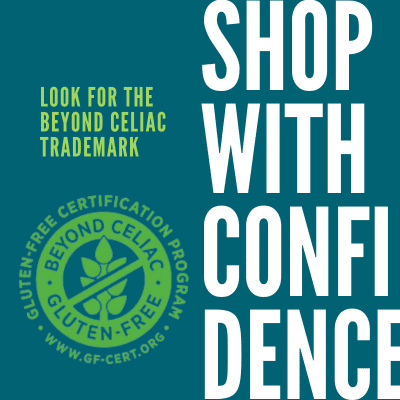As Shavon is a minor, her story is told by a guardian.
Describe your life prior to diagnosis.
Before my celiac disease diagnosis, I would have the occasional stomach ache. Despite these occasional issues, I led a relatively normal life. However, there were some noticeable differences compared to others my age. I struggled with maintaining a healthy weight and often found myself on the smaller end of the spectrum. This could be attributed to the undiagnosed celiac disease affecting my ability to properly absorb nutrients from food. Once I received the diagnosis and transitioned to a gluten-free diet, I anticipated relief from my symptoms. However, the reality was a bit different. Initially, the adjustment to the new diet was challenging, and I found myself experiencing an exacerbation of symptoms. This could be due to various factors such as accidental gluten ingestion, dietary imbalances, or the adaptation period required for my body to heal.
How did you find out that you had celiac disease? Did you suspect it beforehand?
The discovery of my celiac disease wasn’t entirely unexpected, given the familial context. With two of my second cousins already diagnosed with celiac disease, there was a heightened awareness within the family regarding gluten-related issues. Additionally, the presence of other autoimmune diseases like rheumatoid arthritis (RA) and ulcerative colitis (UC) running in the family further suggested a genetic predisposition to such conditions.
Before my diagnosis, I might have experienced symptoms that hinted at a potential gluten sensitivity, such as occasional stomach aches or digestive discomfort. However, it wasn’t until the connection with my family history and the increasing severity of symptoms that my family began to suspect a gluten-related issue.
Ultimately, the confirmation of celiac disease likely came through medical testing.
If you were diagnosed, who made the diagnosis?
I was diagnosed at the age of 8 by a gastroenterologist specializing in digestive disorders. Instead of opting for the standard biopsy procedure, the diagnosis was made through genetic testing. Both genetic markers associated with celiac disease, HLA-DQ2 and HLA-DQ8, were found in my genetic profile.
Given my young age and the potential invasiveness of an endoscopy procedure, my parents and the gastroenterologist agreed that genetic testing would provide sufficient evidence for diagnosis. Moreover, the gastroenterologist mentioned that in some parts of the EU, genetic markers are commonly used for diagnosing celiac disease, which further supported this approach.
The decision to forego the endoscopy in favor of genetic testing was made in consideration of minimizing discomfort and risk for a young patient while still ensuring an accurate diagnosis.
How long did it take for you to get diagnosed since your first symptoms and what (if any) challenges did you face along the way?
I started experiencing stomach pain at around 7 years old, and it took approximately one year for me to receive a diagnosis of celiac disease. During this time, I faced several challenges related to both symptoms and dietary restrictions.
One significant challenge was the limitation on consuming foods I enjoyed, particularly when dining out at my favorite restaurants. For example, not being able to indulge in pizza, a common favorite, was disappointing and required adjustments to my dining choices.
Navigating food choices became another hurdle due to the ambiguity of food labels. Despite efforts to adhere to a gluten-free diet, the lack of clarity on labels made it difficult to discern which products were safe for consumption. This uncertainty led to concerns about cross-contamination and inadvertently ingesting gluten, which could contribute to persistently high TG-IgA levels.
Despite being 14 now, managing my celiac disease remains challenging, especially in social settings such as parties, dinners, and travel. Finding truly gluten-free options in such environments can be difficult, requiring heightened vigilance and sometimes limiting my choices.
Overall, the journey from symptom onset to diagnosis involved navigating various challenges, from dietary restrictions to uncertainties about food safety, all of which continue to impact my daily life and choices.
Do you believe anything could have sped up your diagnosis? If so, please explain:
I believe there were potential factors that could have expedited my diagnosis of celiac disease. One aspect could have been a more thorough examination of my health history and symptoms, especially considering my underweight status and smaller stature for my age. Doctors could have considered other tests or investigations beyond the standard procedures, particularly if they had a checklist that included family history of autoimmune diseases such as celiac disease, rheumatoid arthritis, or ulcerative colitis.
Having a checklist of family history could have served as a valuable tool for both my parents and healthcare providers to recognize potential red flags earlier on. This could have prompted further investigation into possible underlying causes of my symptoms, including celiac disease, leading to a timelier diagnosis and implementation of necessary dietary changes.
In retrospect, a more comprehensive approach to assessing my health history, coupled with awareness of familial predispositions to autoimmune conditions, might have facilitated an earlier diagnosis of celiac disease, potentially alleviating some of the challenges associated with delayed recognition and treatment.
Describe your experience living with celiac disease.
Living with celiac disease has presented numerous challenges, particularly as a middle school student. One of the most significant struggles has been the limitations it imposes on social activities involving food. Whether it’s dining out with friends and family or eating at school, I constantly find myself in the position of having to bring my own food to ensure it’s safe for me to consume. This can sometimes feel isolating, as I’m unable to partake in spontaneous food-related gatherings or experiences like my peers.
Even during special occasions like birthday parties, I have to be diligent about bringing my own gluten-free options, which can sometimes make me feel different or excluded. It’s challenging to navigate social situations where food is a central aspect, and I often have to advocate for my dietary needs, which can be uncomfortable and stressful.
Additionally, traveling poses significant difficulties, as finding safe gluten-free options can be a daunting task, especially in unfamiliar places where I may not be able to communicate my dietary restrictions effectively. Planning and preparation become essential aspects of any trip, and even then, there’s always a risk of encountering cross-contamination or limited gluten-free options.
Overall, living with celiac disease requires constant vigilance and adaptability, particularly in social and travel-related contexts. While it hasn’t been easy, I’ve learned to prioritize my health and well-being while navigating the challenges that come with managing this condition.
What would a cure mean for you?
For me, a cure for celiac disease would be amazing. I don’t like taking medicines because they often have to be taken for a long time and can cause side effects. But if there was a pill you could take just once and be cured, that would be fantastic.
A cure would mean I wouldn’t have to worry so much about what I eat. Right now, I have to be really careful and always check labels to make sure there’s no gluten in my food. It would also mean I could eat out with my friends without having to bring my own food or worry about getting sick.
Even if there isn’t a cure yet, there are things we can do to make life easier for people with celiac disease. We should push for better labeling on food packages so it’s easier to know what’s safe to eat. Schools and restaurants should also be more educated about celiac disease so they can provide more options for people like me.
Is there anything else you’d like to add to your story?
I hope that we can improve education for restaurants about celiac disease, so they understand what it means and the precautions they need to take. It would make a big difference if all schools were also educated about safe practices for students like me who need to eat gluten-free. That way, we could enjoy our meals without worrying about contamination.
Personally, I wish I had received better education about celiac disease when I was diagnosed. I was given a list of foods to avoid, but it would have been helpful to meet with a dietitian or have more detailed discussions. Even now, I still struggle with knowing what I can or cannot eat. Sometimes, I use a Nima tester, but it takes five minutes and is expensive, and it’s not always easy to find extra capsules.
With more people following a gluten-free diet and many being gluten intolerant, it’s important to realize that being celiac is very different. Food labeling needs to be improved because sometimes products claim to be gluten-free when they’re processed in facilities that also handle wheat, or they contain hidden ingredients with gluten that aren’t clearly labeled. This can be dangerous for people with celiac disease who need to avoid gluten completely.




